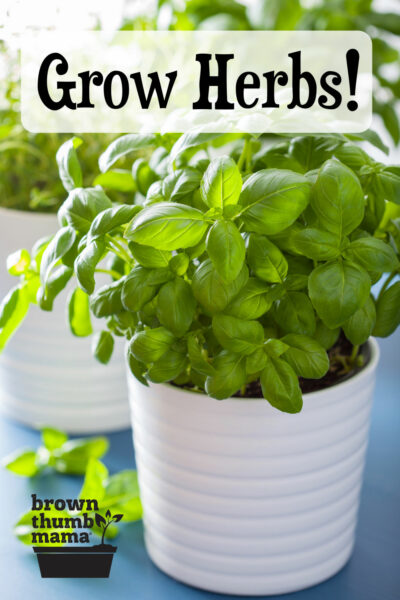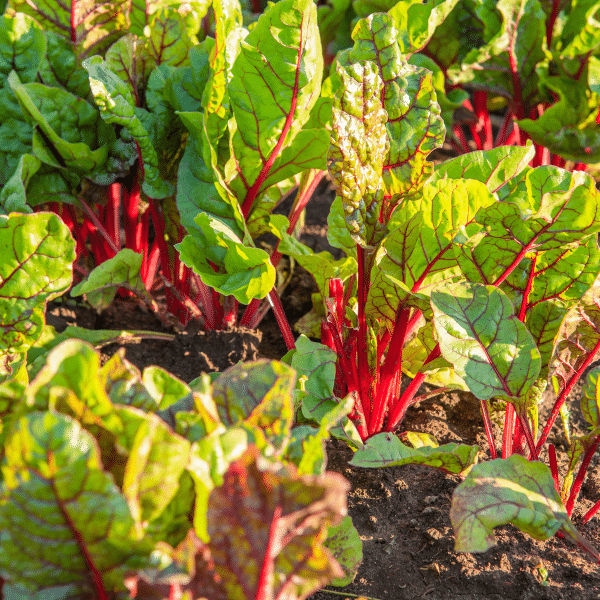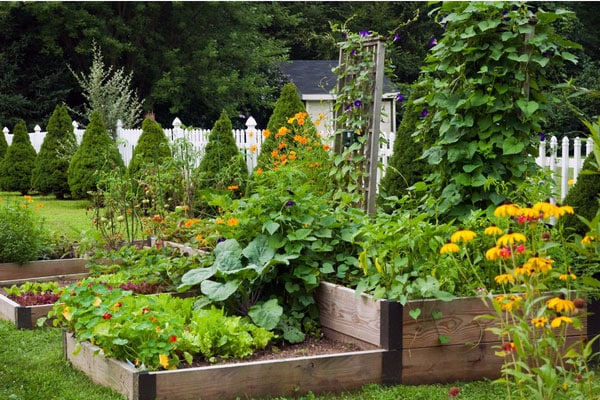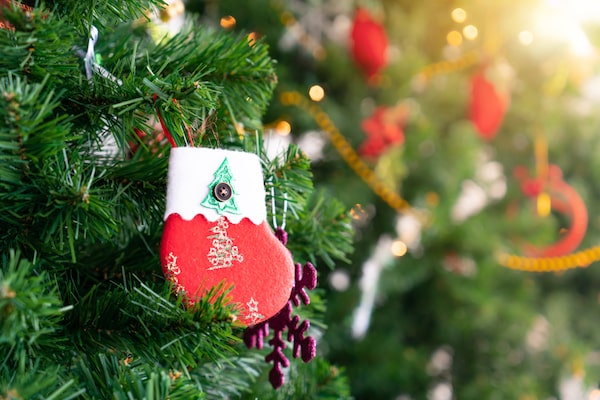This post may include affiliate links.
If you make a purchase, I'll earn a small fee at no extra cost to you.
Planting an herb garden is easy, especially for beginners! Here are the 6 best herbs for beginning gardeners, and how to choose herbs that practically grow themselves.
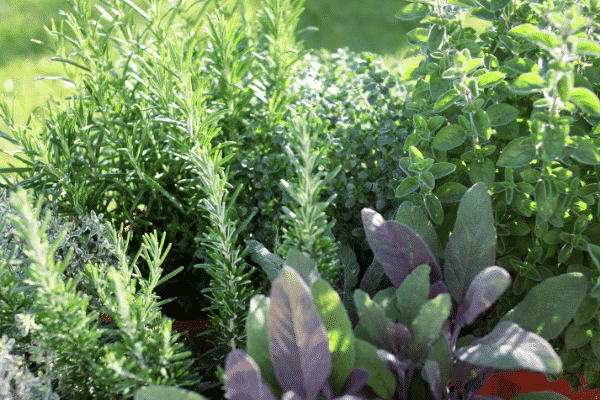
Growing your own herbs is super easy. You can tuck herbs into your vegetable garden, plant them in containers, or even grow herbs indoors. And when you grow your own herbs, you don’t have to pay $3 for a few wilted stems at the grocery store.
This year, as soon as the weather got warm enough, I decided to plant an herb garden in a sunny spot in the backyard. Here are some important tips for planting your herb garden, so you can enjoy a fragrant and abundant harvest.
Are you a brand new gardener? Not sure what to plant or when to plant it? I can help.
You’ll find lots of great information in my new book, The First-Time Gardener: Container Food Gardening.
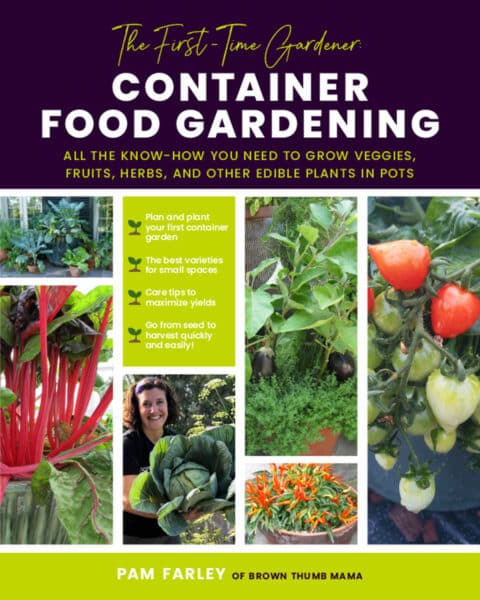
Choosing Plants for an Herb Garden
It’s important to select plants that have the same growing requirements.
The area I chose for my herb garden gets several hours of sun, so I chose herbs that grow best in a sunny spot. It wouldn’t make sense to plant herbs that need shade here because they would either die or bolt (go to seed) quickly.
Herbs that thrive in the sun:
My local plant nursery had more than 100 herbs to choose from. It was hard to decide! Finally, I settled on the herbs that I use the most often: basil, chives, oregano, parsley, rosemary, and thyme.

Preparing the Soil for an Herb Garden
Good soil has lots of organic matter (like decaying leaves and compost), nutrients for the plants, living organisms (like earthworms and fungi), and it needs to be turned or loosened so the roots can get oxygen and water can drain.
The soil where I planted my herbs hadn’t been worked in several years, so it needed lots of TLC. I pulled out the weeds, got rid of the rocks, and mixed in some homemade compost.

Best Herbs for Your Herb Garden
These herbs are easy to grow, and are fantastic in lots of different recipes.
Basil
Basil is a must-have for any herb garden. This delicious herb shines in homemade pesto and spaghetti sauce. And when you have one basil plant, it’s easy to propagate endless basil from that plant–here’s how.
- How to grow: Basil needs 6+ hours of direct sunlight and prefers moist soil, so water it regularly.
- How to harvest: Pick leaves directly off the plant, from the top down, and use them directly in your recipes.
- My favorite type: Italian Genovese Basil
Chives
Chives lend their subtle onion flavor to many dishes. I like to sprinkle chopped chives on baked potatoes, scrambled eggs, and homemade Orange Chicken.
- How to grow: Chives prefer full sun. Water frequently to keep the soil moist in a well-draining location.
- How to harvest: Cut the leaves down to the base when harvesting (to about 2 inches from the soil).
- My favorite type: Common Chives
Oregano
Oregano is a must-have herb for soups, Mediterranean, and Italian dishes. Just like basil, it’s great in spaghetti sauce.
- How to grow: Oregano thrives in full direct sunlight. Plant in well-draining soil and water once the soil is dry to the touch.
- How to harvest: Snip the tops of the stems, and pull off the leaves if the stems are tough.
- My favorite type: True Greek Oregano
Parsley
This popular herb not only tastes great but is good for you too! It contains significant amounts of vitamins A, K, and C.
- How to Grow: Parsley needs 5+ hours of direct sunlight each day. Plant it in well-draining soil and water regularly to keep the soil moist.
- How To Harvest: Cut from the outside of the plant towards the middle once the leaf stems have 3 segments.
- My favorite type: Flat Leaf Parsley
Rosemary
Rosemary adds a delicious pop of flavor to many savory dishes.
- How To Grow: Rosemary needs 6+ hours of direct sunlight each day to thrive. Plant it in well-draining soil and let the soil dry out thoroughly before watering.
- How To Harvest: Clip any stem no more than halfway down to the plant’s base.
- My favorite type: Heirloom Rosemary
Thyme
Thyme adds a nice savory flavor to many soups, pasta, and roasted dishes.
- How To Grow: Thyme needs 6+ hours of full sun. Plant it in well-draining soil and water once the soil has dried out.
- How To Harvest: When harvesting thyme, the more often you cut off of the plant, the more it will grow.
- My favorite type: English Thyme
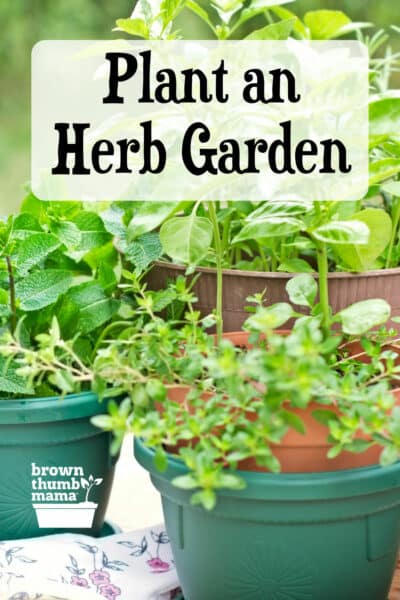
Planting Your Herb Garden
After selecting the herbs you’re going to plant, there are some important details to keep in mind while planting.
Give your herbs room to grow. It looks neat (at first) when you plant everything very close together. However, as soon as your herbs start growing, they’ll be competing for space and soil nutrients. Without enough room to grow, some of them will die.
Plant from tallest to shortest. Tall or bushy herbs like lemongrass and rosemary belong on the back of your garden area. That way they don’t shade the short or bushy herbs, like thyme, as they grow.
Keep invasive herbs contained. Some herbs will “grow crazy” and can take over your entire herb garden. Mint is one of these, so I planted the mint in a container and I’m careful to cut back any runners.
Add some pollinators. I added marigolds to my herb garden for their bright, cheery color (which attracts bees and butterflies) and because their scent helps repel garden pests. Other good companion flowers for your herb garden are sweet alyssum, nasturtium, and calendula.
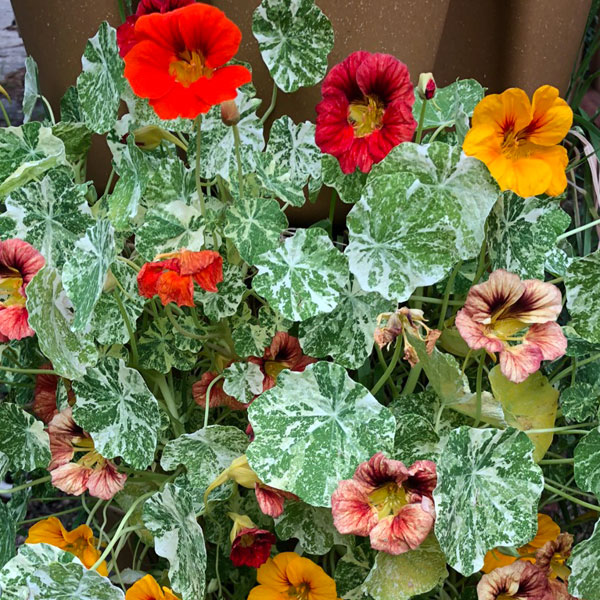
After Planting Your Herb Garden
Water your herbs immediately after planting them, and then water them (either with the hose or a sprinkler) every couple of days. They might droop a little in the afternoon sun, but as long as they perk up in the evening, they’re OK.
Pull any weeds you see while they’re small, so they don’t take water and nutrients away from your herbs. I like to use a CobraHead weeder because it allows me to be very precise.
If you end up with more herbs than you can possibly use, that’s a good problem! Here’s how to dry herbs so you can use them all year long.
What will you grow in your herb garden?
